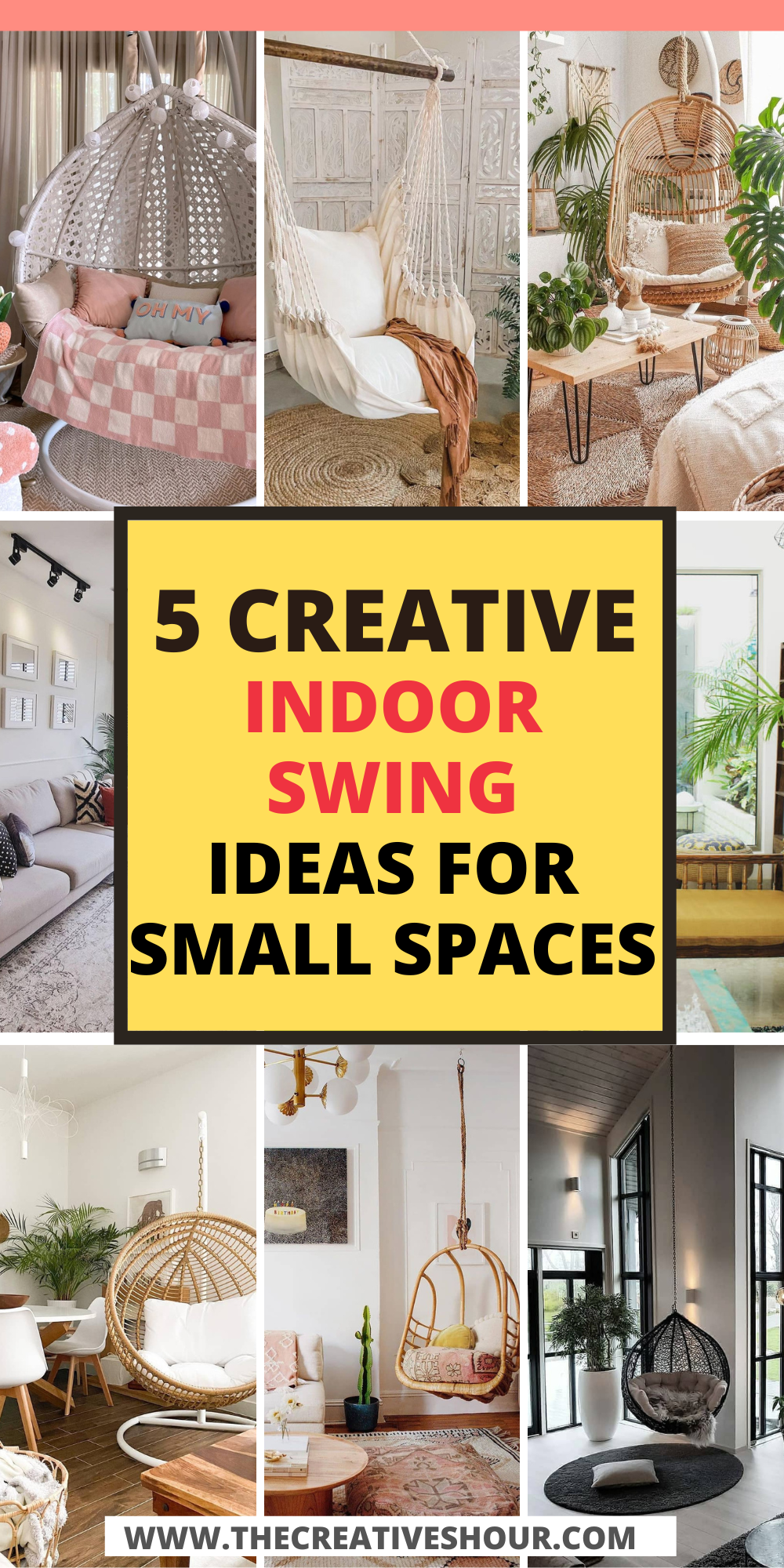
Indoor Swings are becoming a must-have design elements that can instantly reshape the concept of a “home”. Think airy hammocks in sun drenched corners, cozy and calm reading nooks in macrame masterpieces, or a sleek metal cocoons suspended in a stylish haven. But beyond the style, there lies a world of intentional design, surprising space adaption, and comforting functionality.
This comprehensive guide helps you cover inspiring and remarkable home improvement ideas when it comes to indoor swings. Each tip is tailored to diverse preferences that ensures you find the best swing that suits your aesthetic appeal and lifestyle.
Related articles –
- 25 most Beautiful Boho Accent Wall Decor Ideas You Should Try
- 25 Modern And Cozy Bedroom Reading Light Ideas You Will Love
- 35 Beautiful And Chic Round Table Decor Ideas You Should Try
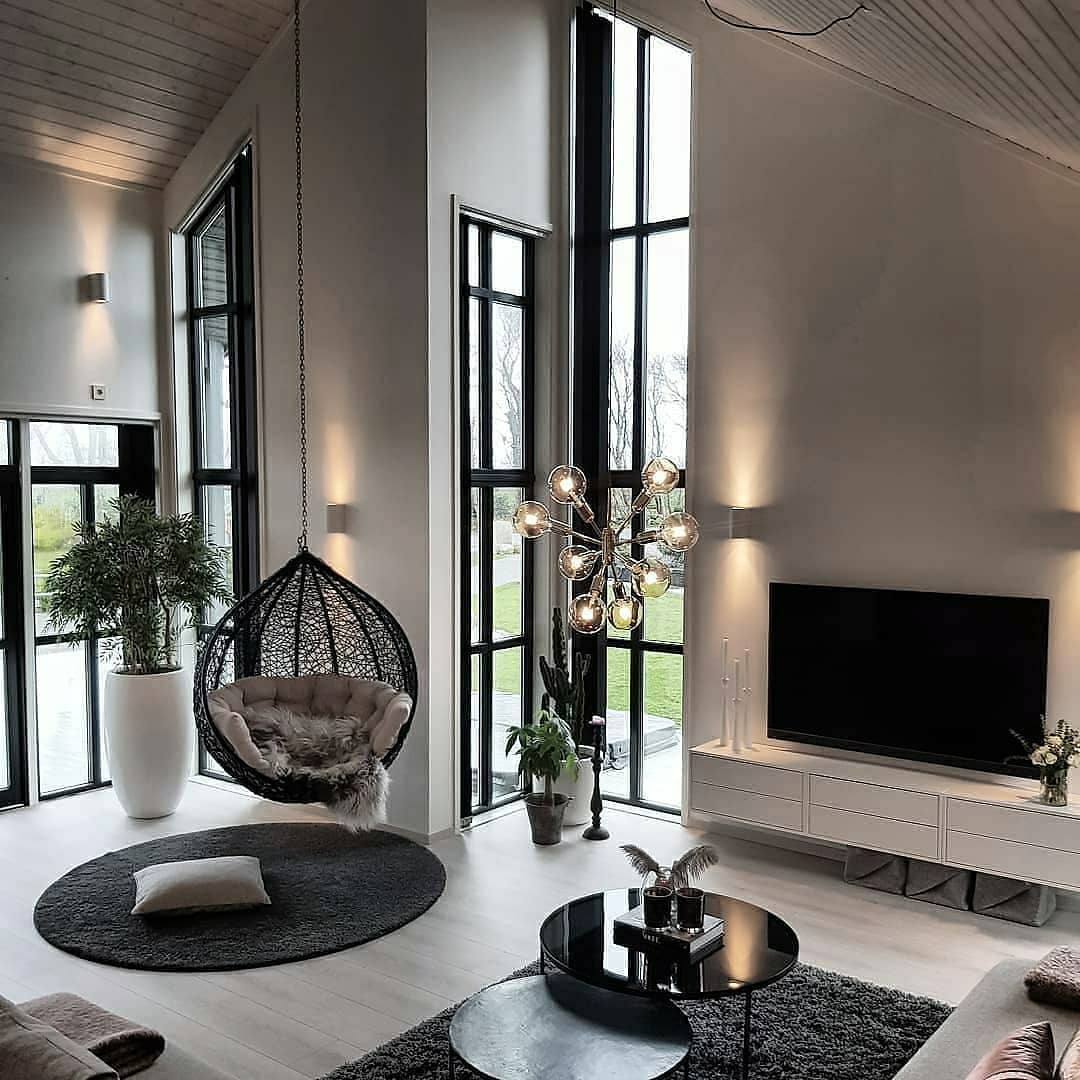
Image by mycharmingplace
Select Compact, Minimalist Swings
“As an interior designer, integrating indoor swings into small spaces can be both a fun and stylish challenge. One creative way I’ve approached this is by selecting compact, minimalist swings with sleek lines and natural materials like wood and leather. These types of swings add a modern, cozy touch without overwhelming the room.
To make the most of limited space, I often position the swing near a window or in a corner to create a designated relaxation nook. This not only maximizes space but also allows for natural light to complement the swing’s aesthetic.
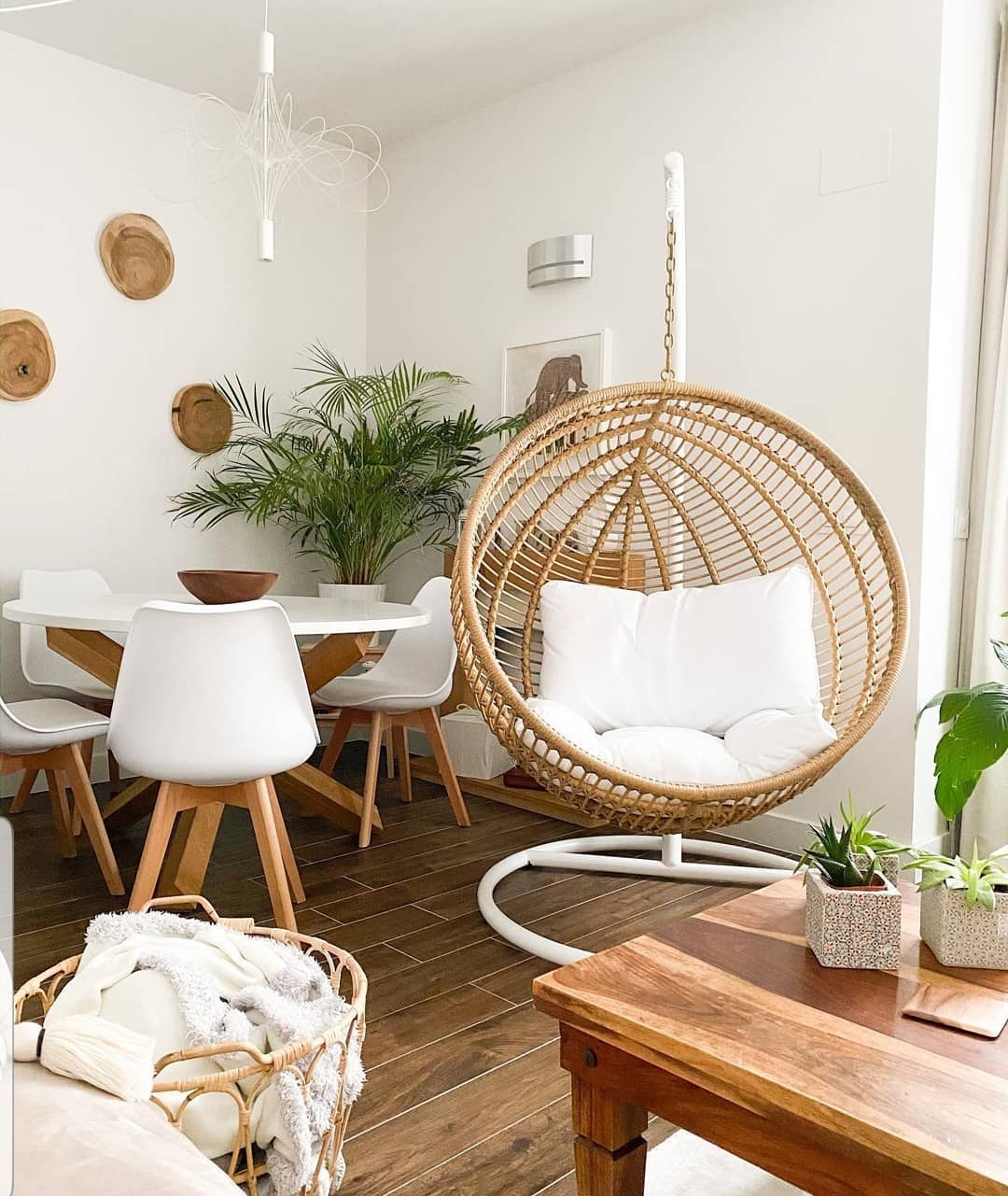
Image by wickerbasketsng
One specific challenge I faced was ensuring the swing was properly anchored in a space with low ceilings. To overcome this, I used ceiling-mounted brackets that allowed for flexibility in height adjustment, ensuring both comfort and safety without compromising the room’s design. By blending practicality with style, indoor swings can elevate small spaces and create a unique focal point.” – Matthew Uebergang, Owner & Interior Designer, Cushee
Use Multifunctional Swing Furniture
“Some interior designs and small spaces require the integration of an indoor swing as a fun but relatively difficult task. Some ideas include the use of multifunctional objects—a seat that will be a swing or a chair, a hanging cradle that will be an excellent place for reading, and so on. That is why using the swing as a piece of furniture again is a great idea; it will not only take up little space (it can be installed in the corner or hang from the ceiling beam) but also create an accent. Due to the lightness of the materials employed, they are easy to carry and install, and as owners of the house may want to change the position of the swing.
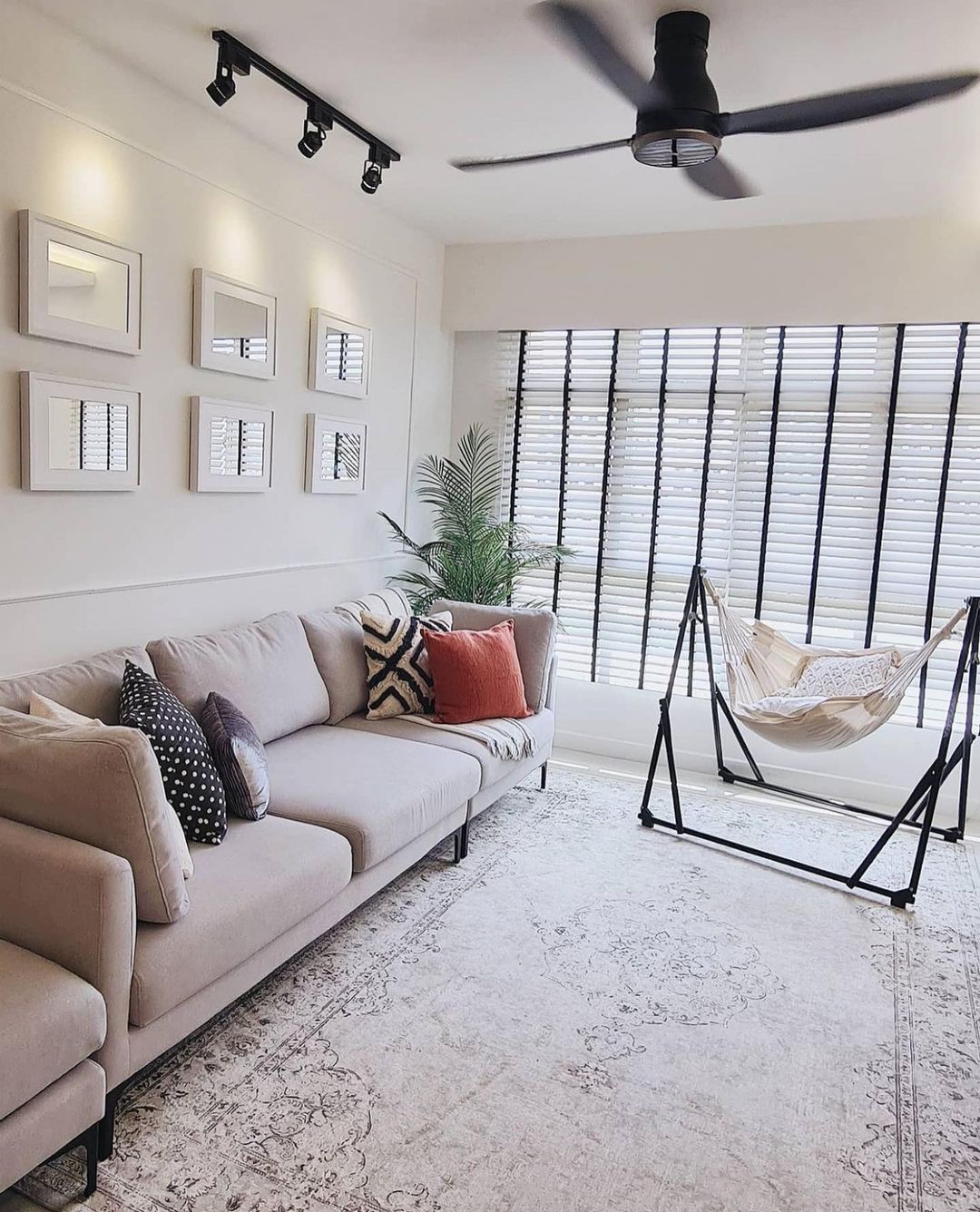
Image by airmocks
A major engineered-system problem is control/containment in terms of safety and stability and can be a limiting factor in smaller structures where reinforcement might be required. To avoid this, I sometimes consult with structural engineers to strengthen ceiling joists as well as choose the right suspending mechanisms appropriate for the design of the particular building.
Also, the use of cushions or blankets of an equal color to the room leads to a proper blend of class and color as well as the improvement of comfort. This thoughtful inclusion of swings does not only become a decoration but also turns it into an advantageous play area, as anything made with style and even with a touch of a minimalist feel.” – Nitya Seth, Interior Designer, NITYANAMYA
Install Swiveling Porch Swing
“As an architect and custom home builder, I have experience designing small spaces that incorporate unique features like indoor swings. For a 250-square-foot studio, the client wanted a reading nook that could also serve as a place to relax and nap. We installed a compact wooden porch swing that swivels 360 degrees in one corner, maximizing the functionality of a small space without compromising on style.
Proper installation was key. We mounted the swing to structural ceiling joists to ensure it could support the weight and swing freely. We also had to consider the clearance required for the swing to move in all directions. The swivel feature allows for multi-directional movement, so the swing can pivot to wherever it’s needed.
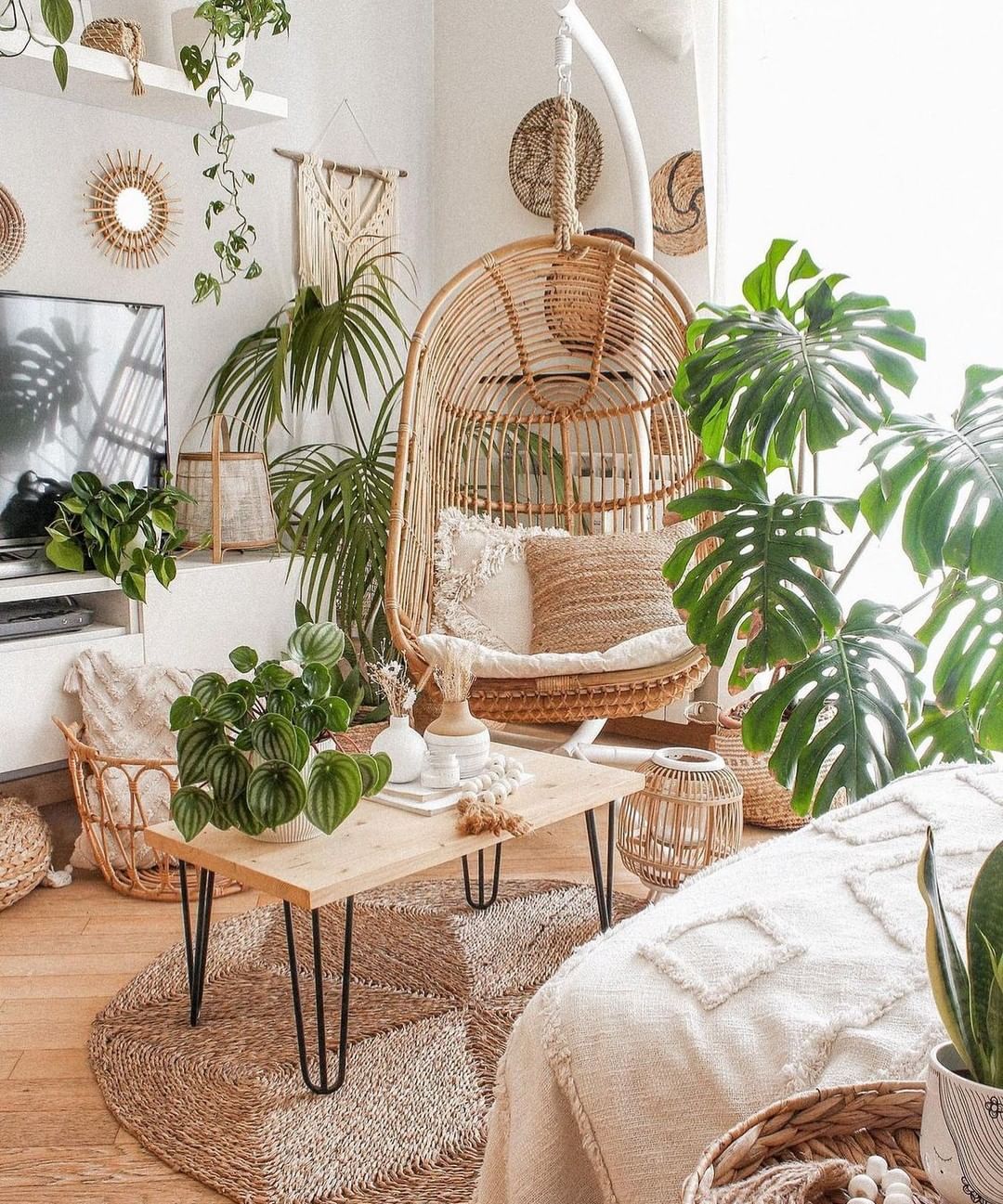
Image by homedeco
For another small attic space, the client wanted a swing for their teenage daughter’s hangout area. We chose a woven egg-shaped swing that provided seating for two but still kept an open feel in the room. The bohemian style complemented the casual, eclectic look of the attic space.
The challenges of incorporating swings in small spaces come down to choosing the right swing for the room and installing it properly to provide both style and comfort. With some creative design thinking, swings can actually improve a small area rather than compromise it.” – Aaron Alway, President, Black Label Design Group
Utilize Vertical Space Wisely
“Integrating indoor swings into small spaces can be a fun, stylish addition, but it does take some creativity to make sure they enhance the space without overwhelming it. Here are a few strategies that have worked well for me:
- Using Vertical Space Wisely – When floor space is limited, I like to take advantage of vertical space. Placing the swing closer to a wall or in a corner keeps the room open. In one project, I positioned a swing near a large window, turning it into a cozy reading nook without taking up the central living area.
- Choosing the Right Design – For smaller rooms, I recommend compact swings with clean, minimalist lines. A slim frame or rattan style works beautifully because it adds texture and interest without making the space feel cluttered. These designs fit nicely into modern, Scandinavian, or even industrial spaces.
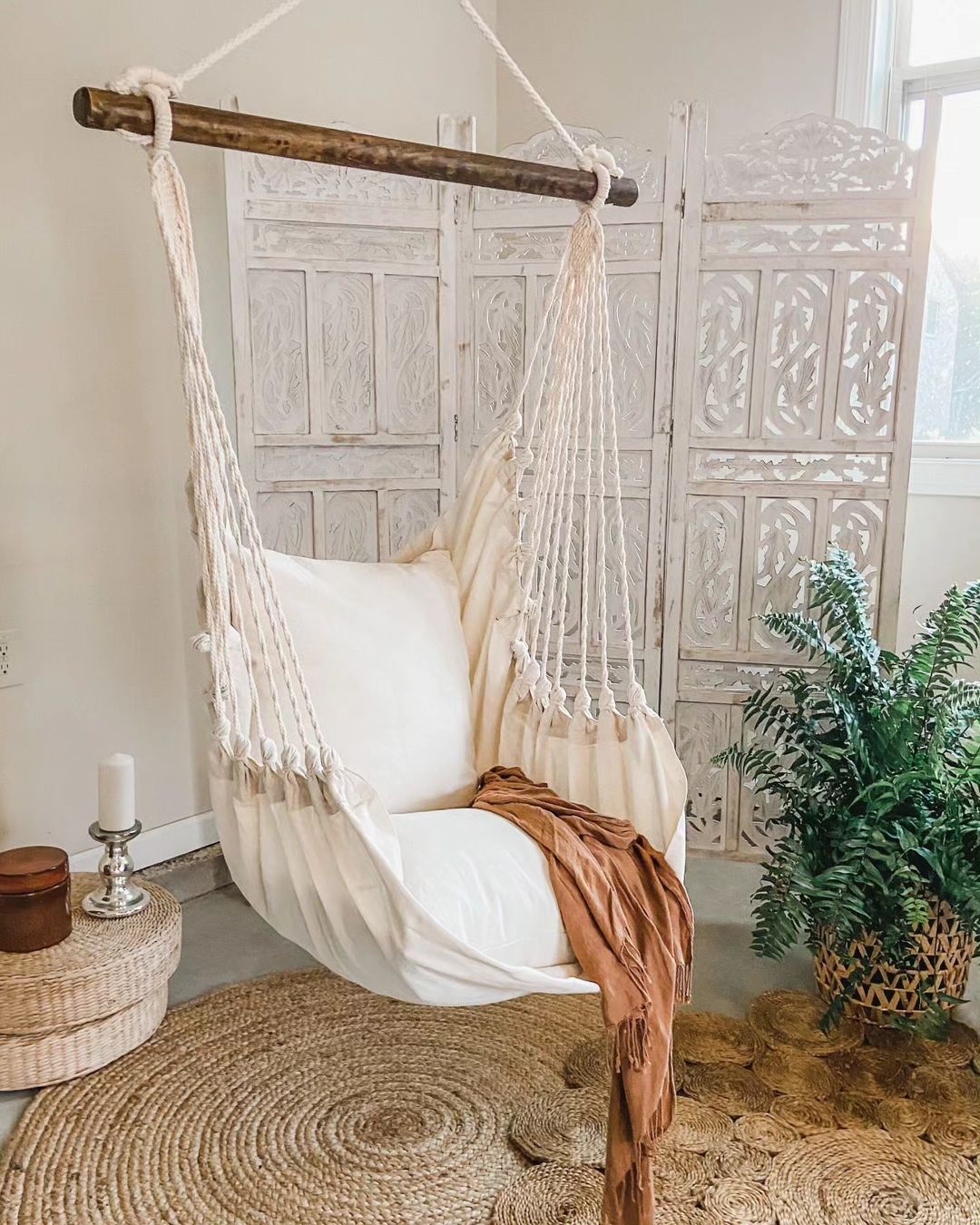
Image by aussiespender
- Making it Functional – In smaller spaces, every piece should be functional. I often recommend swings that double as seating in dining nooks or as part of a playful seating area in the living room. This way, they serve a purpose while adding character to the room.
- Installing Safely – Installation can be tricky, especially in small rooms with limited ceiling space. I’ve faced situations where the ceiling wasn’t strong enough to support the swing, so I opted for reinforced wall brackets instead. This way, we kept the swing secure without compromising on safety or design.

Image by chillpillbyz
- Balancing Comfort and Space – Comfort is key, but in a small room, bulky cushions can take over. I look for ergonomic swing designs with thinner, supportive cushions that offer comfort without crowding the room. Materials like leather or durable fabrics are great for keeping the swing cozy and low-maintenance.
Challenges and Solutions:
- Space Limitations: The biggest challenge is ensuring the swing doesn’t disrupt the room’s flow. By placing it in a spot where it complements the furniture instead of competing with it, the swing feels more integrated.

Image by spotlightcreativeshomes
- Safety: Making sure the swing is securely installed is crucial. Collaborating with contractors or engineers to ensure the ceiling or wall can support the swing’s weight is always a must.” – Adil abbas, Founder, OpulMkt
Securely Install Sleek, Foldable Swings
“Integrating indoor swings into small spaces requires creativity and an eye for detail. Designers frequently use underused corners or lofted places to install swings, which keep both design and practicality in mind. Matching the object’s materials to the surrounding design creates a harmonious blend that adds elegance without clutter. Finding sleek, foldable designs or hammock swings allows you to make the most of your space.
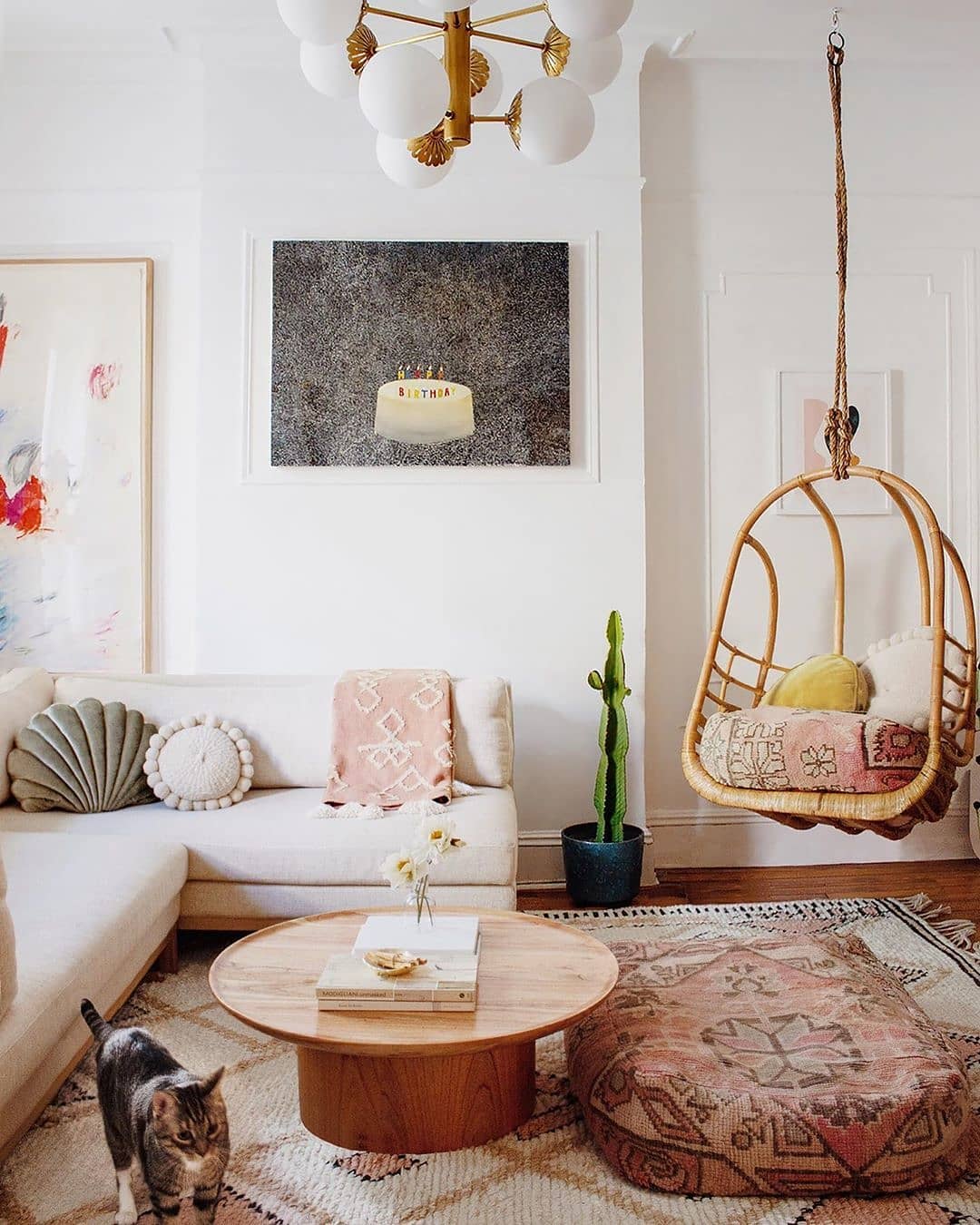
Image by cromly
The main issue I have faced is correctly securing the swing to ensure safety, particularly in tight spaces. To ensure both comfort and durability, make sure the swing is secured to a solid beam with the right hardware.” – Tahn Scoon, Interior Decorator & Designer, Tahn Interiors
Indoor swings are not just childhood memories, they are a design element that has the power to transform homes into places of relaxation, comfort and playful expression. So, embrace your unique style, and flex your creativity with this guide.
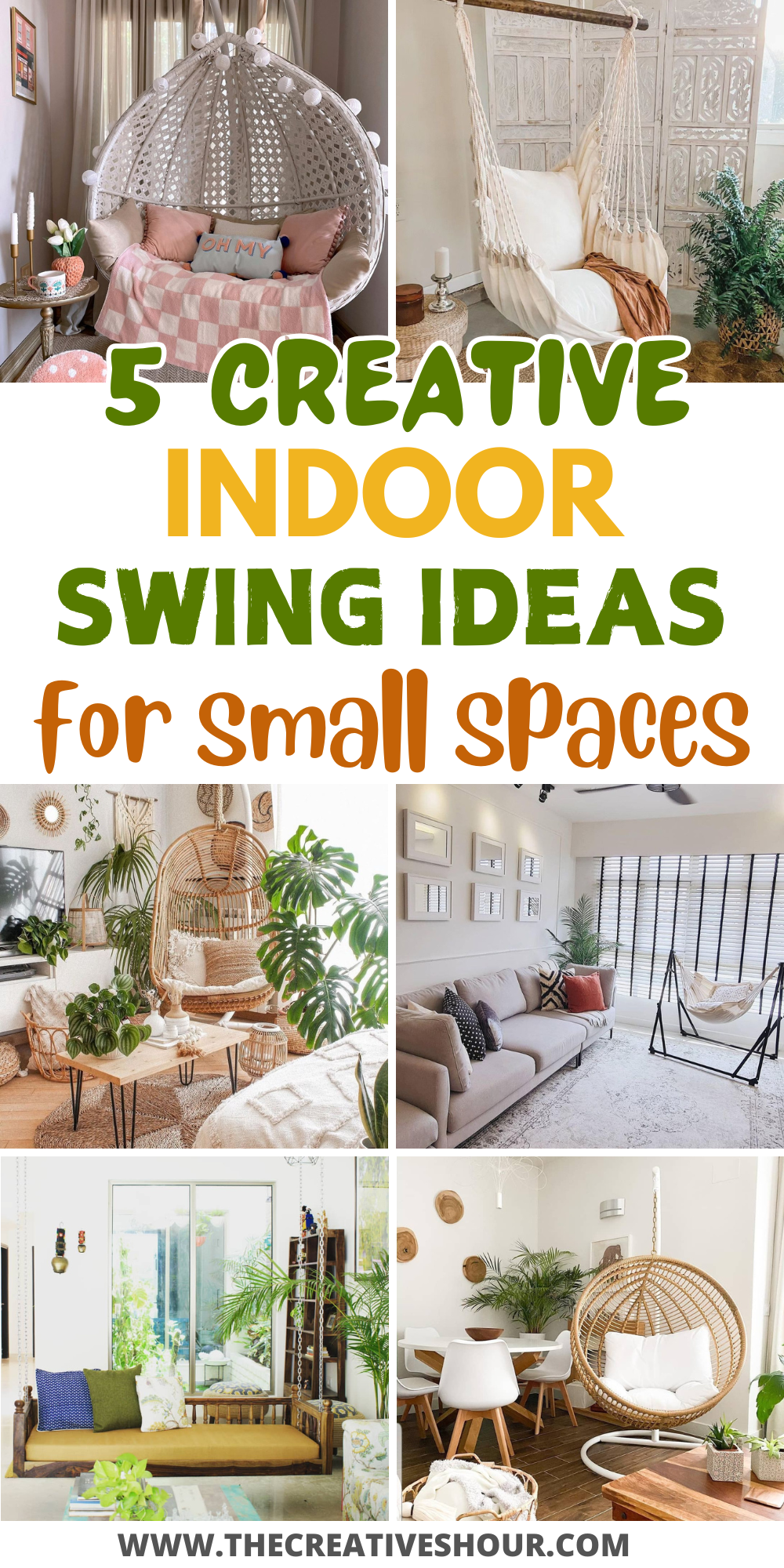
If you love these ideas, don’t forget to pin the above image to your “Home and Garden” board.
